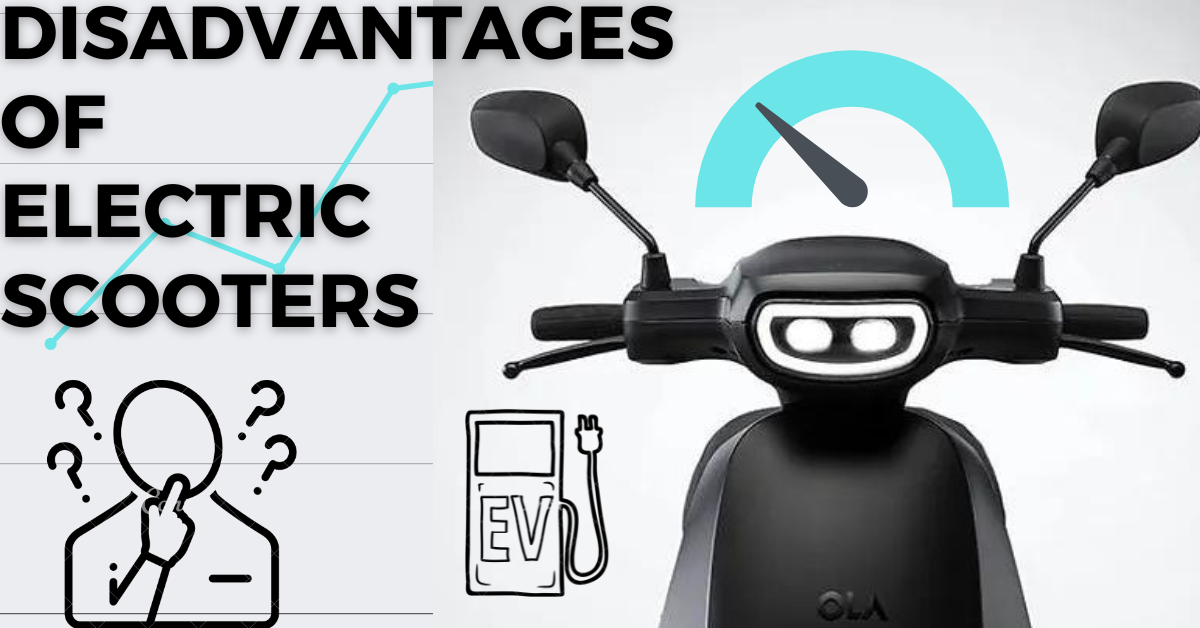Like any technology, electric scooters come with their own set of drawbacks and challenges, particularly in the context of India.
By understanding the challenges associated with electric scooters, readers can make informed decisions about whether an electric scooter is a right choice for their needs and circumstances. Here are the disadvantages:
Disadvantages of Electric Scooters: Don’t Buy Electric Scooter In India
21. Limited Range
Electric scooters have a limited range, typically between 50-300 km per charge, which can restrict the distance they can travel before requiring a recharge.
This can be inconvenient for those who need to use their scooter for long distances, especially in areas without charging infrastructure.
20. Longer Charging Time
Charging an electric scooter can take several hours, which can be inconvenient for those who need to use their scooter frequently or for long distances.
This can make electric scooters less practical for those who have a busy lifestyle or rely on their scooter for work or daily commuting.
19. High Initial Cost
Electric scooters are generally more expensive than conventional petrol scooters due to their advanced technology and materials. This can make them less accessible for those who are on a tight budget or prefer more affordable options.
18. Limited Availability
Electric scooters are not widely available in all parts of India, especially in rural areas where there may be limited access to dealers or showrooms. This can make it difficult for people to purchase or test-ride electric scooters before making a buying decision. This is one of the most common disadvantages of electric scooters in India.
17. Lack of Infrastructure
There is limited infrastructure to support electric scooters in many parts of India, such as charging stations. This can make it difficult for people to recharge their scooters while on the go, especially for those who travel long distances or in areas without convenient access to charging stations.
16. Battery Replacement Costs
Electric scooter batteries have a limited lifespan and can be expensive to replace. This can make maintenance and repair costs higher for electric scooters compared to petrol scooters, especially if the battery needs to be replaced frequently.
15. Heavy Weight
Electric scooters are heavier than conventional petrol scooters, making them more difficult to maneuver and park. This can be a disadvantage for those who need to navigate through heavy traffic or narrow roads.
14. Weather Sensitivity
Electric scooters are sensitive to weather conditions such as rain and extreme temperatures. This can impact the performance and efficiency of the scooter, which can be inconvenient for those who need to use their scooter in all weather conditions. This is one of the most common disadvantages of electric scooters in India.
13. Limited Storage Space
Electric scooters have limited storage space, making it difficult to carry large items or luggage. This can be a disadvantage for those who need to transport goods or materials while using their scooter.
12. Higher Maintenance Costs
The maintenance costs of electric scooters are generally higher than conventional petrol scooters due to their advanced technology and components. This can make servicing and repairs more expensive, which can be a disadvantage for those who want to save on maintenance costs.
11. Noisy Batteries
Some electric scooters are noisy due to their battery technology. This can be a disadvantage for those who prefer a quiet ride or need to use their scooter in noise-restricted areas. This is one of the most common disadvantages of electric scooters in India.
10. Higher Insurance Costs
Insurance costs for electric scooters can be higher than conventional petrol scooters due to their higher cost and advanced technology. This can be a disadvantage for those who want to save on insurance costs.
9. Limited Speed
Electric scooters generally have a lower top speed than petrol scooters, which can be a disadvantage for those who need to travel long distances quickly or keep up with traffic.
8. Limited Load Capacity
Electric scooters have a lower load capacity than petrol scooters, which can be a disadvantage for those who need to transport heavy or bulky items.
7. Inefficient Traffic
In dense traffic situations, electric scooters are less efficient and may require more power to navigate. This can impact the performance and efficiency of the scooter, which can be a disadvantage for those who need to use their scooter in heavy traffic.
6. Risk of Overcharging
Overcharging an electric scooter battery can damage it and reduce its lifespan. This can be a disadvantage for those who need to recharge their scooter frequently or leave
5. Limited Seating Capacity
Most electric scooters have a limited seating capacity, typically only accommodating one or two people. This can be a disadvantage for those who need to transport more people at once.
4. Lack of Power
Electric scooters generally have less power than petrol scooters, which can make it difficult to navigate steep inclines or carry heavy loads. This can be a disadvantage for those who need to use their scooter for heavy-duty purposes.
3. Limited Availability of Spare Parts
Spare parts for electric scooters may be less widely available than those for petrol scooters, which can make it more difficult and expensive to repair or replace components when necessary.
2. Depreciation
Electric scooters tend to depreciate in value faster than petrol scooters due to their advanced technology and the limited lifespan of the battery. This can make it less cost-effective to own an electric scooter in the long term. This is one of the most common disadvantages of electric scooters in India.
1. Safety Concerns
There are concerns about the safety of electric scooters, especially in terms of their speed and ability to navigate through heavy traffic. This can be a disadvantage for those who are concerned about the safety of themselves and others while using a scooter. Additionally, the absence of mandatory helmet laws in some states of India has led to several fatal accidents.



